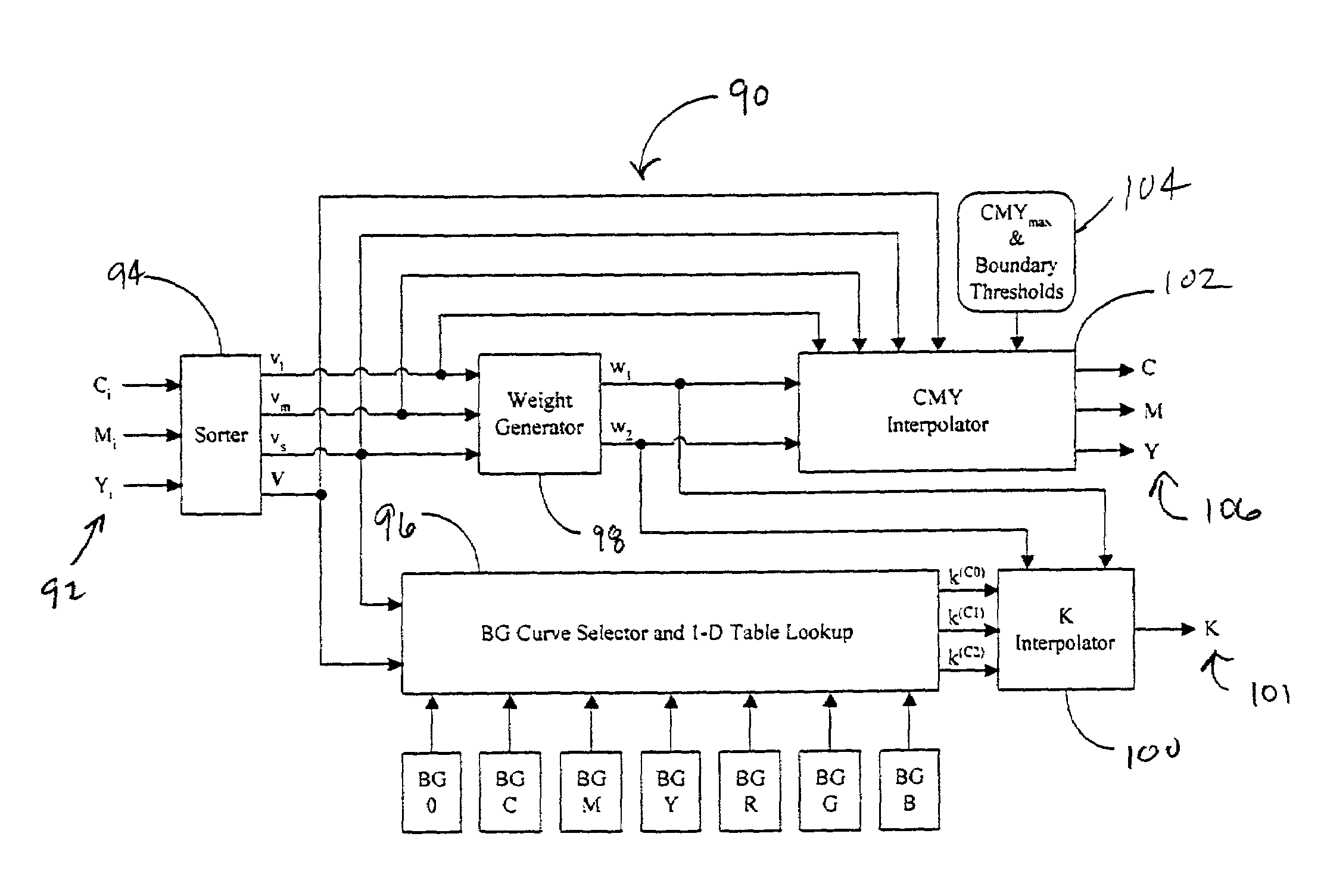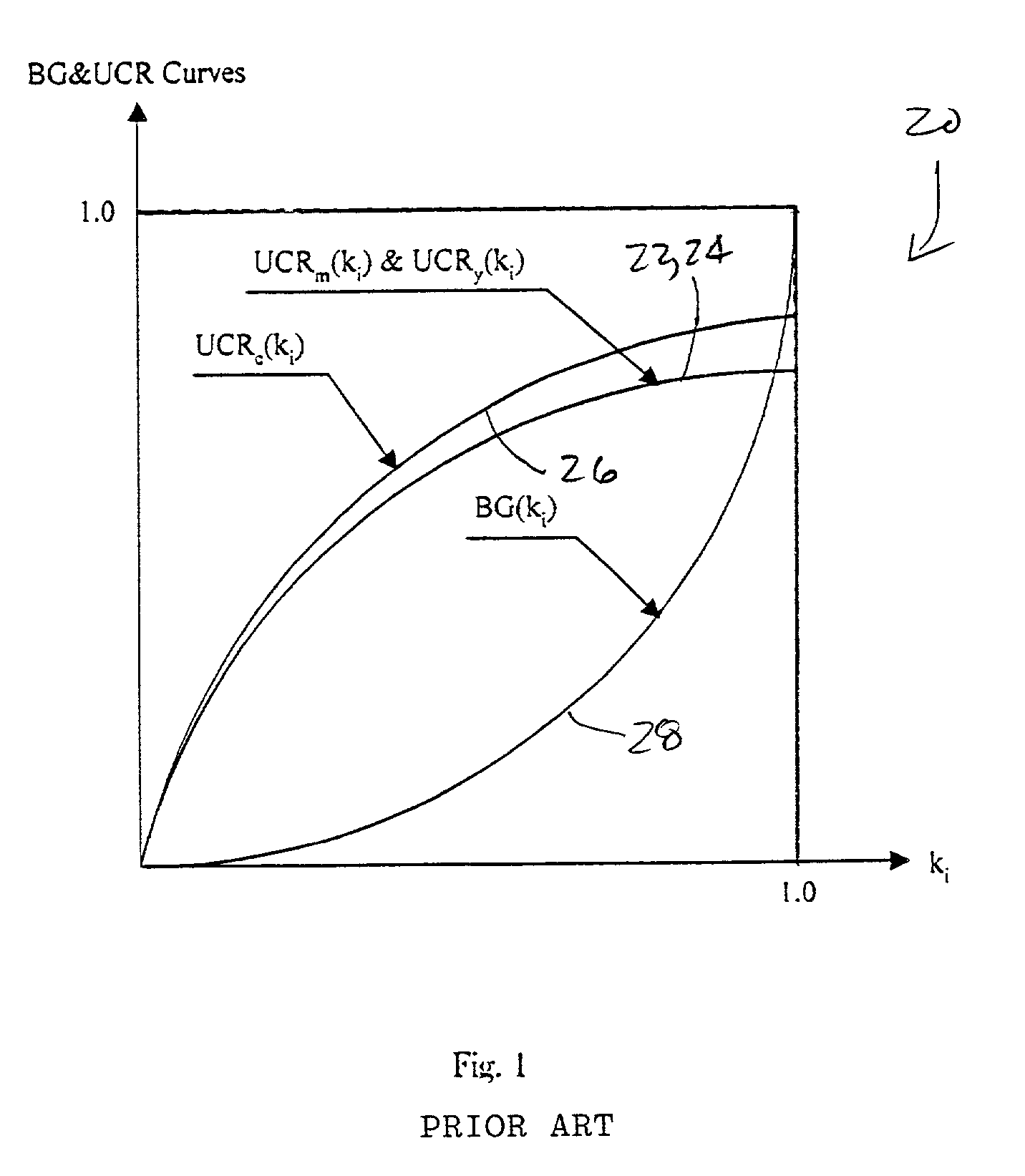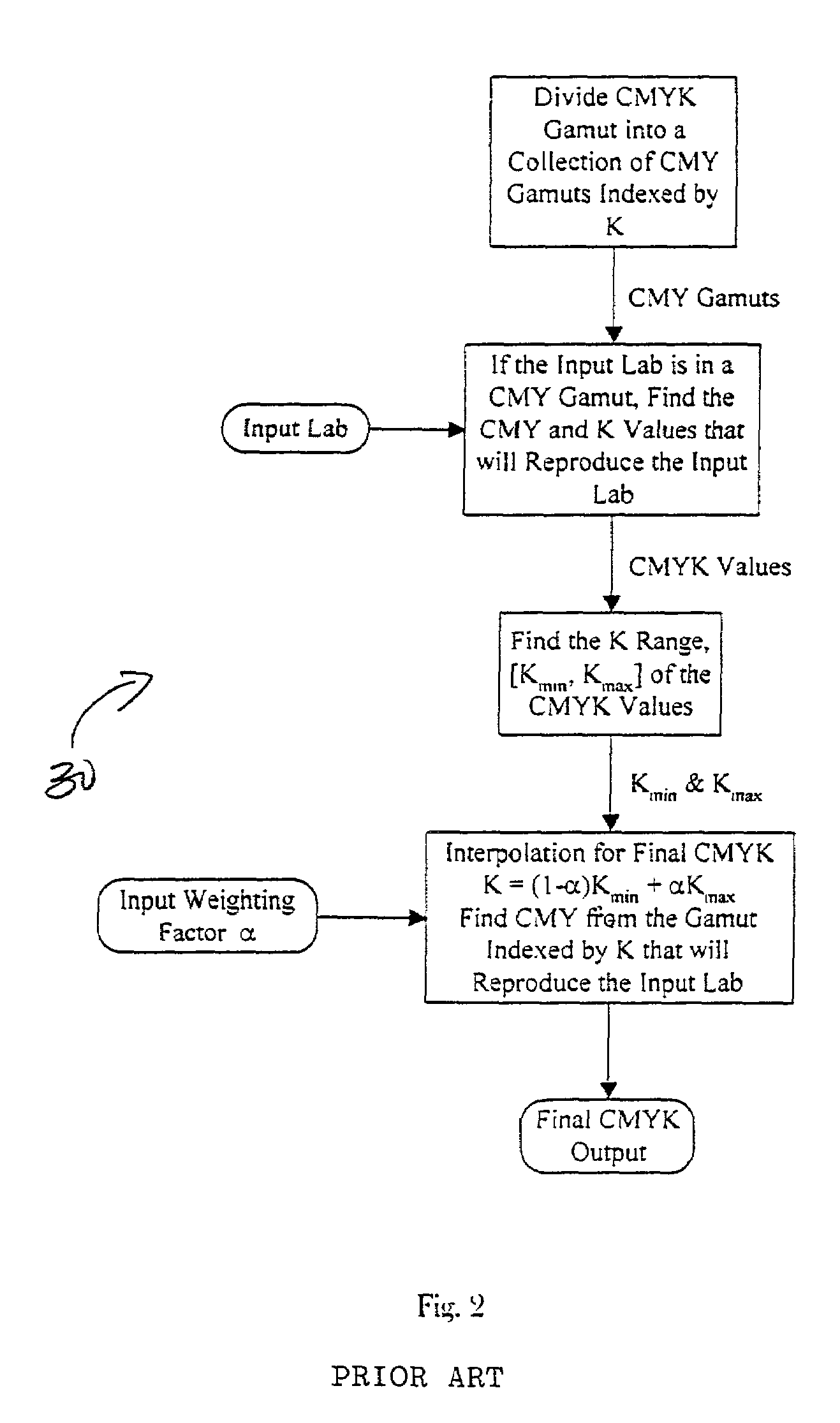Black generation method for CMYK color printer using multiple lookup tables and interpolation
a color printer and lookup table technology, applied in the field of black generation techniques of cmyk color printers, can solve the problems of inflexibleness to fully utilize the printer color gamut, inability to produce inability to achieve high-quality black images when combined, so as to achieve the effect of maximizing the printing gamu
- Summary
- Abstract
- Description
- Claims
- Application Information
AI Technical Summary
Benefits of technology
Problems solved by technology
Method used
Image
Examples
Embodiment Construction
[0036]There are three subtractive primaries usually used in printing devices Cyan, Magenta and Yellow. All hues can be generated by these colorants, but additional colorants may be used to extend the color gamut beyond that of use of CMY only. The most common colorant used is black.
[0037]This disclosure considers a CMYK printer. The term “printer input color gamut” refers to the CMY primaries and the term “printer output color gamut” refers to the set of colors obtainable using black (K) colorant.
[0038]Adding K to CMY lowers the L* value of the resulting color, so some amount of CMY must be removed. The term undercolor removal (UCR) defines the reduction of CMY amounts along a neutral scale, while the term gray component replacement (GCR) defines the reduction of CMY amounts throughout the entire gamut of the printer. There are other schemes used to increase gamut in select areas, and one of these is referred to as undercolor addition (UCA). UCA is the addition of K in the darkest a...
PUM
 Login to View More
Login to View More Abstract
Description
Claims
Application Information
 Login to View More
Login to View More - R&D
- Intellectual Property
- Life Sciences
- Materials
- Tech Scout
- Unparalleled Data Quality
- Higher Quality Content
- 60% Fewer Hallucinations
Browse by: Latest US Patents, China's latest patents, Technical Efficacy Thesaurus, Application Domain, Technology Topic, Popular Technical Reports.
© 2025 PatSnap. All rights reserved.Legal|Privacy policy|Modern Slavery Act Transparency Statement|Sitemap|About US| Contact US: help@patsnap.com



